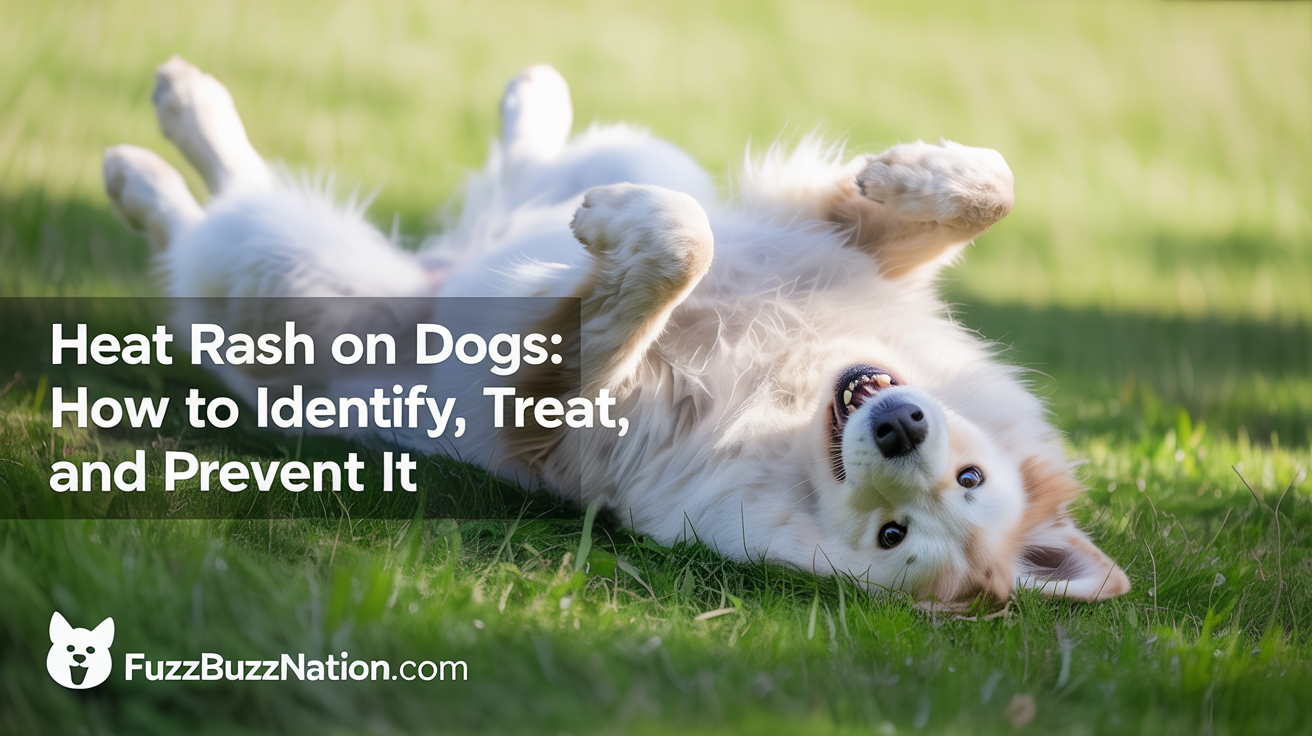
Heat Rash on Dogs: How to Identify, Treat, and Prevent It
What Is Heat Rash on Dogs?
“Heat rash on dogs” is a term pet owners often use to describe red, irritated skin that appears during hot and humid weather. While it’s not an official veterinary diagnosis, it generally refers to conditions like pyotraumatic dermatitis (hot spots) or heat-exacerbated skin inflammation. These skin issues typically arise when heat, moisture, and friction disrupt your dog’s natural skin barrier.
What Causes Heat Rash in Dogs?
In my experience with long-haired breeds like Golden Retrievers, heat rash often follows a hot summer hike or inadequate drying after a bath. Here’s what’s usually happening beneath the surface:
- High temperatures and humidity create an ideal environment for bacteria to grow.
- Thick fur or skin folds trap heat and moisture, especially in breeds like Bulldogs or Shar Peis.
- Scratching or licking from the initial irritation worsens the condition by damaging the skin further.
Signs and Symptoms to Watch For
Heat rash doesn’t always look the same, but these signs are common:
- Small, red bumps in areas with minimal fur
- Warm, inflamed skinoften on the belly, groin, or armpits
- Excessive licking or scratching
- Irritability or restlessness
- Blisters or sores in severe cases
You’ll often find heat rash in areas where airflow is limited: under collars, in skin folds, or where the dog has been lying on hot ground.
Which Breeds Are Most at Risk?
Some dogs are more prone to heat rash than others. Based on veterinary research and personal observation, high-risk breeds include:
- Chow Chows and Golden Retrievers (due to thick coats)
- Bulldogs, Pugs, and French Bulldogs (skin folds and brachycephalic traits)
- Greyhounds and Boxers (thermoregulatory challenges)
Factors like age (over 12 years), obesity, and poor grooming can increase the risk further.
When to See a Vet vs. Treating at Home
Not all heat rashes need an emergency visit. Here’s a breakdown:
Home Care Is Usually OK If:
- The rash is mild (just a few bumps)
- Your dog is alert, eating, and acting normally
- There’s no sign of infection (pus, foul smell, extreme swelling)
See a Vet If:
- The rash spreads or worsens after 24–48 hours
- Your dog is visibly uncomfortable or in pain
- You notice blisters, bleeding, or secondary infections
Emergency Care Needed If:
- Your dog has a temperature over 103°F
- There’s vomiting, collapse, or breathing difficulty
- The skin is severely blistered or bleeding
Safe Home Remedies for Mild Heat Rash
If the case is mild and you’ve confirmed with your vet, here are home remedies that have worked well in my experience:
- Move your dog to a cool, dry place.
- Gently clean the area with cool water or mild antiseptic.
- Apply a cool compress for 10–15 minutes.
- Use vet-approved hydrocortisone cream (up to 3 days).
- Prevent licking with an e-collar.
Avoid these treatments:
- Human medications like Neosporin or hydrocortisone
- Vaseline (traps moisture)
- Ice directly on skin
- Bandages over the rash
Veterinary Treatments for Moderate to Severe Cases
A vet may prescribe:
- Topical or oral antibiotics
- Medicated shampoos
- Prescription-strength anti-itch meds
- Skin culture or allergy testing for recurring cases
These treatments help manage both the symptoms and any underlying infections or conditions.
How to Prevent Heat Rash in Dogs
Prevention is keyespecially with climate change increasing the number of high-heat days. Here’s what I recommend:
- Avoid walks during peak heat hours (11 AM–4 PM)
- Keep your dog hydrated with access to cool water at all times
- Use cooling vests or mats, especially for brachycephalic or thick-coated breeds
- Groom regularly to remove excess fur
- Dry skin folds daily, especially after walks or baths
- Check the ground before walkinghot pavement can contribute to overheating
Recovery and Prognosis
With early care, most heat rashes heal within:
- 2–7 days for mild cases
- 1–2 weeks for moderate cases
- 2–3 weeks for severe cases
Prompt treatment and consistent care significantly improve your dog’s recovery outlook.
Cost Considerations
Treating heat rash doesn’t always break the bank, but costs can vary:
- Vet visit: $70–174
- Medications: $15–80
- Emergency care: $200–500+
Preventive care (cooling gear, grooming tools) is a smart investment to avoid future costs.
FAQ: Heat Rash on Dogs
What does heat rash on dogs look like?
Small red bumps, inflamed skin, and sometimes blisters, usually in warm, moist areas like the belly or groin.
Can I treat my dog’s heat rash at home?
Yesif symptoms are mild and your dog acts normally. Use cool compresses and vet-approved creams.
Is heat rash dangerous for dogs?
It can be. Left untreated, it may lead to secondary infections, systemic illness, or even heatstroke.
Which dogs are more likely to get heat rash?
Thick-coated, brachycephalic, overweight, and older dogs are most at risk.
Can heat rash come back?
Yes. Recurrence is common if environmental or grooming issues aren’t addressed.
Key Takeaways
- “Heat rash” usually means hot spots or heat-exacerbated skin irritation.
- Early intervention prevents complications.
- Brachycephalic and thick-coated breeds are most vulnerable.
- Home care works for mild cases, but vet care is crucial when symptoms worsen.
- Prevention through grooming, cooling, and timingis your best strategy.


